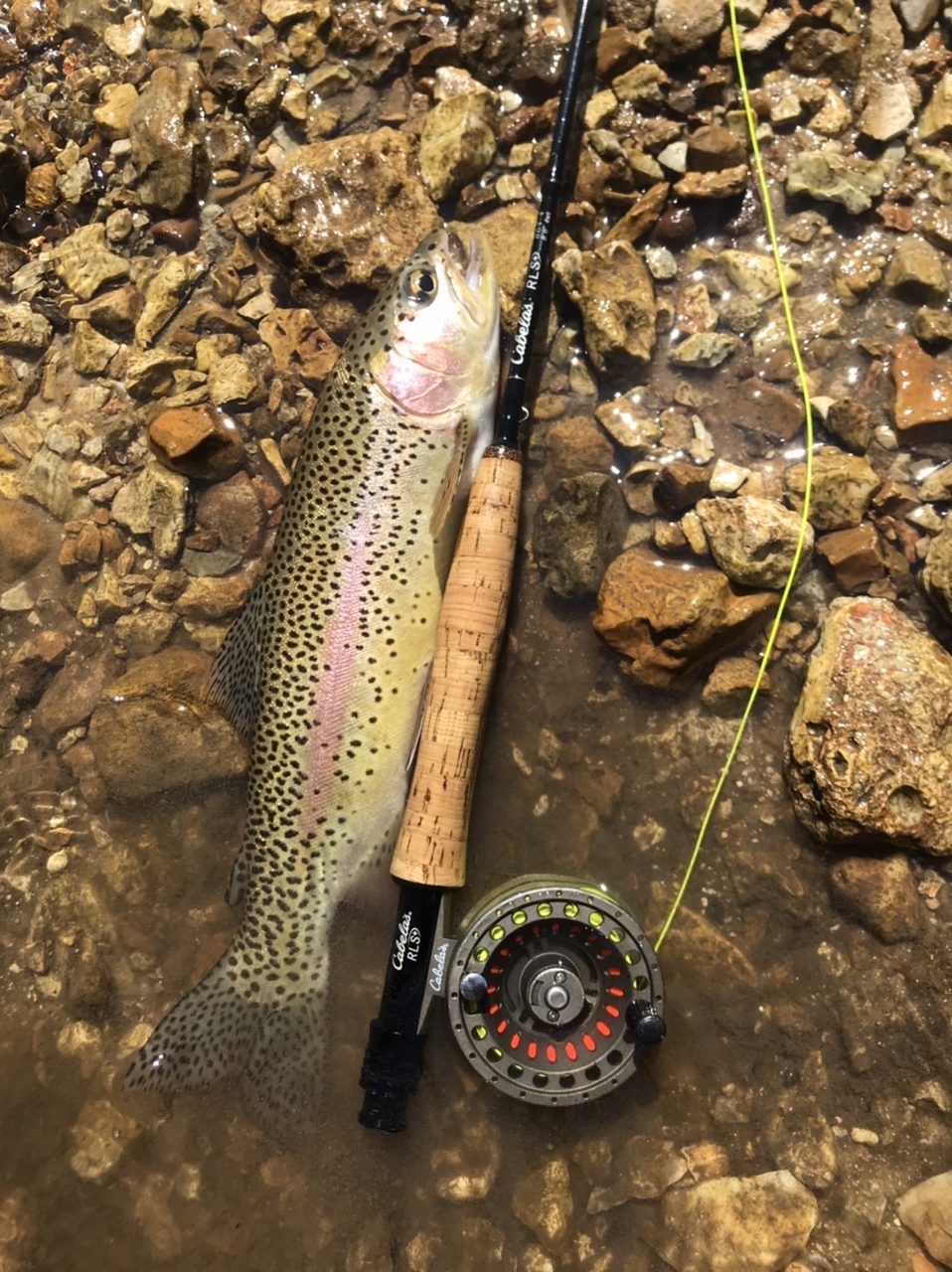In the past six months, I have begun exploring the Blue Ribbon trout streams of Missouri. The Missouri Department of Conservation classifies Blue Ribbon Streams as, “excellent trout habitat and smaller streams that support naturally reproducing Rainbow Trout.” These streams include; Crane Creek, Spring Creek, Mill Creek, Blue Springs Creek, Little Piney Creek, Barren Fork Creek, North Fork of the White River, Current River between Montauk State Park and Cedargrove, and the Eleven Point River from the Greer Spring Branch to the Turner Mill Access.
Definitely not your everyday trout park
These streams are challenging for me, especially because my experience fly fishing for trout mainly consisted of fishing the trout parks. There are several key differences between the trout parks and these streams. First of all, the fish were born in the stream, and they act like it. The first time I fished a Blue Ribbon Stream I became discouraged. I didn’t see any fish like I normally did while at the trout parks.

I soon learned that this difference is due to their feeding habits. Blue Ribbon trout are accustomed to their surroundings. These wild fish typically feed near or on the bottom on passing insects. This means using weighted nymphs or other flies that get down to the bottom can increase your chances of a hookup. In contrast, flashy spoons, bright jigs, and attractor flies often work better at trout parks because they get the attention of the stocker trout. This difference is key to making the adjustment to catching these fish.
Another added difficulty is the casting room. In some of the smaller streams, you often have limited space for your backcast. As a novice fly fisherman, this has been one of my biggest struggles. In addition, these fish are wary, so inaccurate casts and sloppy line control is very likely to spook the fish. Basically, these streams are tough little fisheries that can challenge even the most accomplished fly anglers.
Missouri Trout Slam
So why am I fishing them? There are two parts to this answer. Last fall I fished my first Blue Ribbon stream, and I lucked into a sole rainbow trout. It took me nearly the whole day, but it was still one of the best fishing days for me in recent memory. I saw absolutely nobody, and the stream was pristine. The wild rainbow I caught put all of the stocker fish I’ve caught to shame in terms of both looks and fight. Even though it was only around 10 inches, it surprised me with its power and speed. This first exploratory trip got me hooked on these streams.

What really got me into a frenzy was the Blue Ribbon Trout Slam program. This joint venture between Trout Unlimited and the Missouri Department of Conservation is new for 2020. It is essentially a reward system where you can achieve three different levels based on how many streams you have caught a fish out of. If you catch a trout from five streams, you make the bronze level and are eligible to receive a bronze pin and certificate. Once you catch a trout from seven streams you receive a silver pin and a certificate. Finally, if you catch a trout from all nine streams, you receive a gold pin, a certificate, and a medallion. This program has motivated me and my dad to start checking blue ribbon streams off our list in pursuit of the rewards.
What has worked for me?
Currently, I am up to four streams, meaning I am one away from the bronze pin. Each stream is unique, but I have managed to catch fish out of each stream on the fly rod using a similar technique. Early on, I recognized the need to get your fly down to the bottom in order to get more strikes. With this in mind, I tied a variety of size 12-14 weighted nymphs. I fish these nymphs on relatively light tippet, so as to not spook the trout. By adjusting the depth under my indicator I can ensure that my fly is ticking the bottom every once in a while without getting snagged.

I like to focus my efforts on broken water, especially in the smaller streams. For me I find it is easier to fish the faster moving sections of riffles and pools. In these areas the fish are less likely to be spooked by my clumsy casting. Once I cast, I try to minimize drag on my indicator and if it jumps, dives, or moves at all, I set the hook. I end up setting the hook on a lot of rocks, but it is necessary to react to every shift of the indicator, because it can be very difficult to distinguish between a snag and a rock quickly enough to get the hook set.
This is the technique I have been using, and it has found me modest success. By no means is this the only, or even the best way to fish these streams. I am still learning things every trip, and next time I might learn a new way of catching these trout. I would not take my advice too seriously. Experiment on the water with different techniques and you might figure something out I haven’t.
The Missouri blue ribbon trout streams are hidden gems. I encourage you to get out and give them a try.
For More information, check out this link:
https://huntfish.mdc.mo.gov/fishing/trophies-certificates/blue-ribbon-trout-slam
Also be sure to check out our earlier report from the Little Piney:












